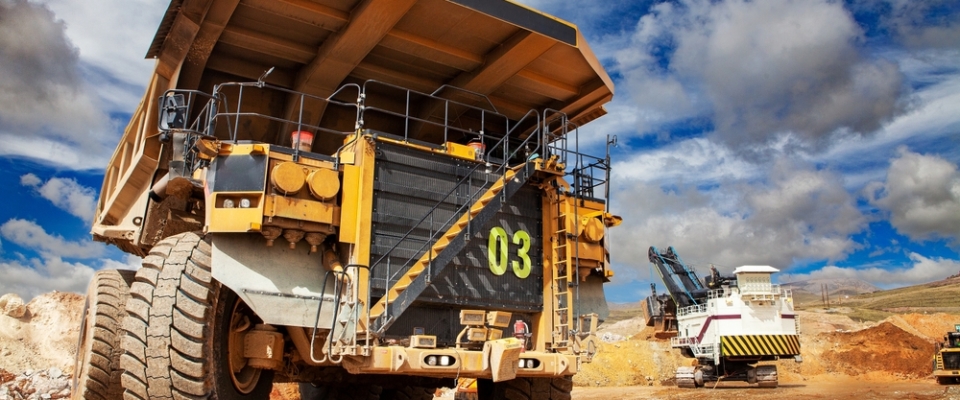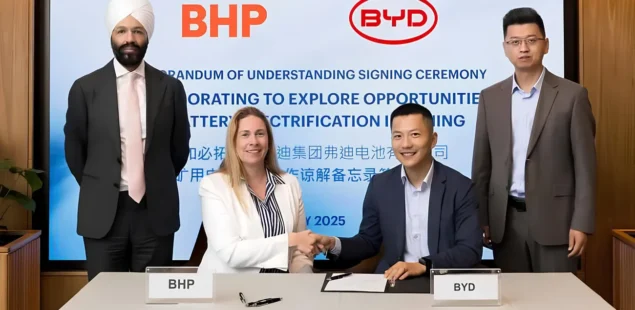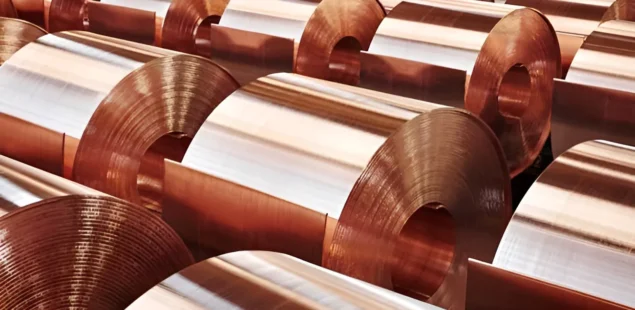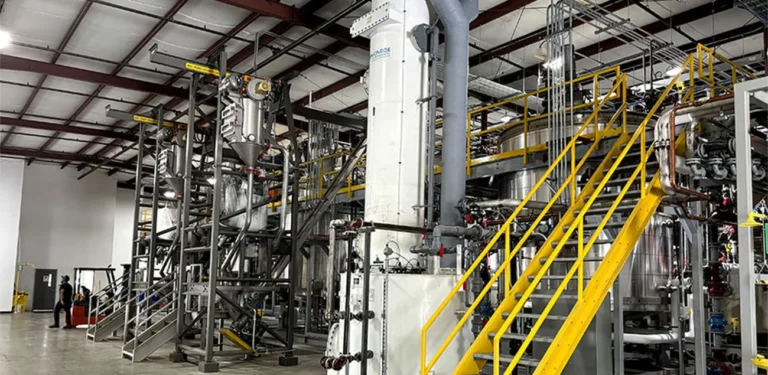
Global Copper Deficit May Deepen
Global copper production increased by 2% year-on-year in January 2025 to 1.905 million tonnes (pure metal), with concentrate output rising by 2.9% and electrolytic recovery declining by 0.9%, according to the International Copper Study Group. Output rose in Peru (+7%), the Democratic Republic of Congo (+6%), and Asia (+3%), but fell in North America (-2%) and Chile (-2.7%) due to operational challenges at several major mines, including equipment failures and environmental restrictions.
Refined copper production grew by only 1% to 2.382 million tonnes in the same period, with output from ores rising by 0.9% to 1.987 million tonnes and from scrap by 1.3% to 395,000 tonnes. Production constraints, particularly in Chile, limited growth and further exposed vulnerabilities in the supply chain. With copper smelting facing bottlenecks in several regions, concerns are rising that future increases in demand may not be adequately met without significant new investment in processing facilities.
Consumption rose marginally by 0.5%, with increased demand in Asia, North Africa, and the Middle East offsetting weaker usage in the U.S., Japan, and the EU. In particular, expanding construction activity in Southeast Asia and electrification projects in Egypt and Saudi Arabia provided upward pressure. However, tepid industrial recovery in Europe and declining manufacturing activity in Japan kept global demand from rising more sharply. The resulting global deficit for January was estimated at 19,000 tonnes.
Mercuria Energy Group forecasts that copper prices may rise by as much as 30%, driven by the possible introduction of U.S. import tariffs. The U.S. Department of Commerce is investigating the national security implications of copper imports, prompting exporters like Trafigura, Glencore, and Gunvor to accelerate shipments and stockpile copper in U.S. warehouses. By the end of March, up to 150,000 tonnes could arrive in the U.S., reinforcing strategic stockpiles.
Meanwhile, scrap exports from the U.S. have declined, and domestic buyers are exploring alternatives in Latin America. If tariffs are imposed, U.S. prices could rise sharply, potentially leading to regional imbalances, with U.S. inventories building while the rest of the world faces shortages. Copper prices on the London Metal Exchange may rise to $13,000 per tonne in the near term, a level not seen in over a decade. Some analysts also anticipate increased speculative trading and longer-term hedging, further fuelling price volatility.
Amplats to Spin Off as Valterra Platinum
Anglo American Platinum (Amplats) is set to become an independent entity named Valterra Platinum by the end of May 2025. The name change is expected to be approved at Anglo American's annual general meeting on May 8. This restructuring marks a significant step in Anglo American's realignment strategy, with the aim of concentrating on commodities with more consistent long-term growth outlooks.
The move follows Anglo American's strategic shift to focus on iron ore, copper, and fertilisers. Post-spin-off, Anglo American will retain only a 19.9% stake in Valterra Platinum and will not hold any board seats. Valterra will seek a listing on the London Stock Exchange to attract new investors, particularly those with a high-risk appetite and interest in the platinum group metals sector.
Amplats' production challenges and falling platinum and palladium prices influenced the decision. In 2024, Amplats cut output by 7% to 110.5 tonnes, while EBITDA fell 19% to $1.1 billion. Net profit declined by 40% to $464 million due to a 13% drop in the platinum basket price. The company has also struggled with rising operational costs and regulatory hurdles in South Africa, which have hampered its efforts to maintain stable output levels.
The rebranding to Valterra Platinum is also aimed at distancing the company from its previous reliance on automotive sector demand, which has been declining amid the shift toward electric vehicles. The new entity is expected to expand its focus to include alternative platinum uses in hydrogen technologies and industrial catalysts.
U.S. President Signs Order to Increase Critical Mineral Production
President Donald Trump has signed an executive order titled “Immediate Measures to Increase Mineral Production,” aimed at boosting domestic extraction of critical minerals such as rare earths, uranium, copper, gold, and others. The policy is intended to reduce reliance on foreign mineral imports by ensuring reliable and affordable domestic supply chains, particularly amid escalating geopolitical tensions and trade restrictions.
The order mandates the identification of mineral-rich federal lands and prioritises their leasing and development. Agencies are required to deliver site lists within 10 days and identify suitable extraction sites within 30 days. Funding will be sourced from the Department of Defense and other military agencies. Environmental assessment processes may be fast-tracked under this initiative, a move likely to face pushback from conservation groups.
The executive order invokes the Defense Production Act, reflecting the administration's recognition of U.S. vulnerability in critical mineral supply chains. The U.S. Geological Survey’s 2022 critical materials list includes 50 minerals, including aluminium, cobalt, zinc, titanium, beryllium, and tin. Many of these are vital to the production of semiconductors, renewable energy technologies, and advanced defense systems.
Rare earth metals remain a key concern, with the U.S. exploring opportunities for access in Ukraine, Russia, and African countries. Addressing this strategic challenge will likely require substantial public funding. Discussions are also underway about creating a national stockpile of critical minerals, following models used for oil and strategic metals during previous periods of geopolitical tension.
Boeing and Airbus Expand Use of Composites
Boeing and Airbus are advancing the use of thermoplastic composite materials and robotic assembly in aircraft production to improve manufacturing efficiency. Thermoplastics offer benefits such as reheatability, reshaping capabilities, and ultrasonic welding, enabling faster production and lighter, seamless structures. They also enable reductions in the number of fasteners and joints, thus improving overall structural integrity.
The goal is to reduce reliance on aluminium and titanium in future aircraft, though there are hurdles. Certification of welded components, maintenance complexities, and end-of-life recycling remain significant challenges. Composite parts are difficult to repair, and current recycling methods are undeveloped compared to metals like aluminium and titanium, which can be remelted and reused.
Moreover, the economics of scaling thermoplastic composite production remain uncertain. Capital expenditures for new production lines are high, and suppliers must ensure material consistency and quality. Despite these obstacles, industry analysts expect composite usage to increase steadily, particularly in new generation regional aircraft and lightweight drones.
Lithium Market Forecast to Recover by 2028
After two years of decline, lithium prices may rebound to $15,000–20,000 per tonne by 2028, supported by anticipated growth in electric vehicle (EV) demand. Global EV sales could reach 55 million units over the next five years, spurring lithium consumption. This resurgence is expected to be driven by lower battery costs, government subsidies, and increasing infrastructure for EV charging networks worldwide.
In 2023, global lithium use rose 27% to 180,000 tonnes, though demand remains uneven. The U.S. is heavily reliant on imports from Argentina and Chile. Industry leaders are warning that unless domestic mining projects are accelerated, supply gaps could hinder energy transition targets set by U.S. policymakers.
New technologies may improve lithium supply efficiency. Direct lithium extraction from brines offers high recovery rates (up to 98%) and reduced environmental impact compared to traditional evaporation methods. French company Adionics has also developed a technology to extract high-purity lithium from recycled batteries without generating toxic waste. These innovations could reduce the need for new mining projects in the long term.
In addition, several U.S. and European start-ups are piloting small-scale lithium refining facilities that aim to supply local battery manufacturers directly. This regionalisation trend may help mitigate future supply chain disruptions and promote more sustainable practices across the lithium value chain.



